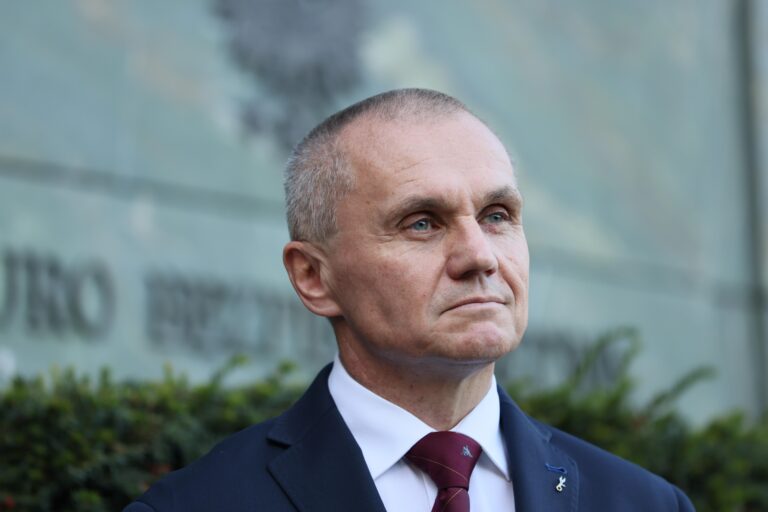Biznes Fakty
NBP President Adam Glapiński on the adoption of the euro in Poland

The introduction of the euro in Poland could pose a considerable risk of a boom-bust cycle, characterized by a temporary surge in economic activity spurred by credit expansion, followed by a downturn and a rise in unemployment, stated Adam Glapiński, President of the National Bank of Poland.
„Theoretical analyses regarding optimal currency areas, along with the historical functioning of the eurozone, clearly demonstrate that it is not an optimal currency area. Primarily, the mobility of production factors (especially labor) and the flexibility of prices and wages are restricted within this currency zone,” Glapiński expressed in the central bank’s publication „Bank i Kredyt”.
In his article titled „Risks Associated with the Premature Adoption of the Euro by Poland in the Context of Optimal Currency Area Theory,” the NBP President highlighted that „simultaneously, there is no fiscal instrument available, for understandable reasons linked to the absence of a democratic mandate, that would allow for a substantial transfer of resources to economies experiencing an asymmetric shock”.
NBP President on the Eurozone
„Economies within the eurozone exhibit significant diversity concerning production structures, labor market institutional conditions, levels of debt, and the extent of wealth and real convergence. These variations imply that the synchronization of business cycles among eurozone economies is incomplete. Inflation trends often differ or manifest at varying intensities,” Glapiński noted in the article.
He emphasized that eurozone economies vary in their natural interest rate levels. According to the NBP head, this suggests that the central bank’s interest rate in the eurozone cannot be uniformly suitable for all economies within this currency area.
He underscored that historically, this has resulted in unstable credit booms in certain economies, which subsequently led to pronounced and prolonged economic downturns, accompanied by a significant rise in unemployment.
„When evaluating the theoretical literature on optimal currency areas, as well as the eurozone’s operation to date, it must be clearly articulated that Poland’s adoption of the euro would currently entail considerable risks for maintaining economic equilibrium and further convergence of the Polish economy,” the NBP President articulated.
Glapiński on the euro in Poland
He assessed that these risks would stem from two primary sources. One would be the loss of the ability to adjust interest rates according to the domestic economy’s requirements after joining the eurozone. Consequently, interest rates post-adoption „would frequently be misaligned with the economic cycle phase that Poland is experiencing”.
„Simultaneously, they would be maintained at a level lower than the long-term natural interest rate. This would lead to a substantial risk of a boom-bust cycle, characterized by a temporary surge in economic activity driven by credit expansion, followed by a downturn and an increase in unemployment. Restoring economic balance – in the absence of the option for exchange rate depreciation – would be a long-term, socially costly process, significantly raising unemployment and emigration,” assessed the NBP president.
The second source of risk associated with euro adoption would be the loss of the advantages provided by the zloty’s floating exchange rate. According to the central bank’s head, the floating exchange rate „serves as a vital mechanism for absorbing economic shocks”. The forfeiture of these advantages „would heighten GDP and unemployment volatility during the business cycle, while also posing a risk of diminished competitiveness, weakened exports, and a prolonged downturn in industry”.
„In the forthcoming decades, as the Polish economy becomes more affluent and converges with the wealthiest economies of Western Europe, the evaluation of the balance between the economic benefits and costs of euro adoption may evolve. However, at this moment, that balance is distinctly negative,” Adam Glapiński concluded.
Poland’s commitment to adopt the euro
Poland committed to adopting the euro upon joining the European Union, yet no specific timeline has been established for the transition from the złoty to the common currency.
To adopt the euro, three criteria must be fulfilled: – firstly – price stability, meaning that inflation in the adopting country should not exceed 1.5 percentage points higher than in the three eurozone nations with the lowest inflation for a year; – secondly – the interest rate, whereby the average long-term nominal interest rates in that country cannot surpass the rate of the three best-performing Member States by more than 2 percentage points; – the third criterion pertains to public finances – according to this criterion, the public finance deficit of a country adopting the euro should not exceed 3% of GDP, and public debt cannot be greater than 60% of GDP.
An additional fourth criterion relates to the stability of the exchange rate – for two years, the currency of the adopting country must remain within the ERM 2 exchange rate mechanism, during which it should not exhibit significant deviations from the ERM 2 exchange rate, and there should be no devaluation of this currency against the euro.
Currently, Poland does not satisfy any of the conditions for entry into the eurozone, although in certain circumstances, the European Commission may waive the requirement to meet all criteria.
Croatia
Źródło



